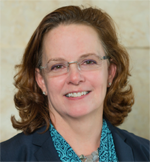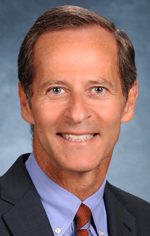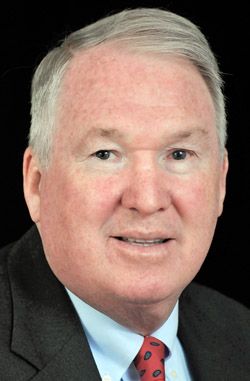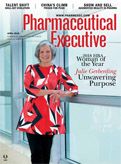HEOR Education: Evolving the Skill Set
Pharmaceutical Executive
Practitioners in the field of HEOR training and education outline how the best courses are responding to advancing industry needs.
When Gina Ewy, a partner at Jupiter Life Science Consulting, based at the organization’s Raleigh, NC, offices, started doing health economics and outcomes research (HEOR) and market access work around 25 years ago, “we didn’t really have a name for it,” she says. “We called it global pricing and reimbursement. There was no formal training. Most people who have been doing market access for this long came from all walks of life-accountants, doctors, attorneys (Ewy is an attorney herself)-and ended up staying in this work because they enjoyed it.”
Dr. Grant Lawless, associate professor and program director, Healthcare Decision Analysis, at the University of Southern California, adds that, traditionally, health economics groups and marketing groups “spoke very different languages.” When it came to communicating with the managed care companies and the payers, there was difficulty in putting together clear and relevant arguments that the payers understood and that represented the demanding needs of both the health economics and the marketing groups. “There was no true education that prepared professionals to communicate between those departments,” says Lawless.
While health economics “has always been there,” says Ewy, it is only in the last 10 years or so that there has
Gina Ewy

been “an increased emphasis on observational research or the kind of perspective studies that we need to do from the pharmaceutical industry to show the drugs work in the real world.” Programs have emerged that give young people exposure to health economics, outcomes research, observational real-world evidence, and market access, but the development of such training was initially a slow process. Today, a handful of courses stand out as primers for expert talent in this still-maturing field.
One educator who was ahead of the curve was Dr. David B. Nash, founding dean of the Jefferson College of Population Health in Philadelphia. Back in the early 1990s, when he was a clinical associate professor of general internal medicine on the faculty at Jefferson Medical College and chair of the subcommittee on medication safety at Thomas Jefferson University Hospital’s P&T committee, Nash says that all he could see was the escalating cost of drugs. “I was often asked to justify why we were putting particular products on the formulary,” he told Pharm Exec. “One thing led to another and we noticed we needed additional expertise to make a strong evidence-based case for products and technology, to prepare scientists to help other clinicians make a smart purchase decision.”
Hence, in 1992–93, Nash helped to create Jefferson’s first post-doctoral, PharmD fellowship program, which offered students one year in situ within the faculty and a second year on site at a pharma company. With support from the industry-an early supporter being former SmithKline Beecham-the first goal of the fellowship was to create “a cadre of HEOR leaders who could build HEOR shops in pharma internally,” says Nash. The second goal was to shape leaders who could contribute to the burgeoning scholarship of HEOR. The longest-duration post-doc, in-person HEOR fellowship worldwide, Jefferson’s program now has more than 50 alumni, “spread worldwide, with many at a very senior level,” says Nash.
By the early 2000s, it became apparent that there was a need for more practical degree courses in HEOR. Jefferson’s Office of Health Policy, however, did not yet have the Board of Trustees’ authority to grant a degree until it evolved as a “bona fide” department of health policy in 2003 and then became the Jefferson College of Population Health (JCPH) in 2008. At that point, the college was able to press ahead with launching its formal online Master’s degree program. It took two years to create the curriculum and the program debuted in 2010. Since then, JCPH’s Applied HEOR program has been really successful, says Nash.
“We have students in probably 25 states and a handful overseas, the vast majority, more than 90%, coming from the industry,” he says. “They are among our best students, very motivated. Most of our fellows are also
David Nash

taking the degree program. Where the fellowship is more practical, on the Master’s they get more formal research training.”
The average age of the students coming to Jefferson’s online courses is 42, where the average age of the fellows is 30.
Nash says, “The older students are typically mid-career; they’re looking to the horizon and thinking, ‘What can I do to get to the next level, to get promoted, to play a more active leadership role?’”
About a dozen students a year join the Applied HEOR program. JCPH looks for people who are committed and who can show evidence that they can do graduate-level work. “But the thing we look for the most on our Skype interviews is commitment to the field,” says Nash. “It is a course for grown-ups only.”
Since Jefferson took the lead, there has been a growth of online HEOR programs, but Nash considers Jefferson’s the preeminent domestic program. Providing the course online is vital, he adds, “because we would never be able to get folks from 20 states to come in and make a full-time commitment.”
The classroom experience
For his part, Lawless notes that a number of today’s HEOR programs out there “tend to be more siloed, as either pure health economics or pure health policy in their training.” Lawless decided when setting up the USC’s Masters of Science and Healthcare Decision Analysis (HCDA) in 2012 that it would train individuals “with all the skills they would need for both health economics, applied health policy and marketing and the bridging skills that brought those three key areas of knowledge together, to create the kind of story and the data and analysis that payers needed in order to successfully cover new therapies.”
Lawless also believes that many of the online programs entering the academic marketplace can miss out on the robust experience offered by the USC classroom-based program. “We’re willing to design the programs during weekends, coupled with long, concentrated weeks in the summer,” he says, “but we don’t believe anything is as valuable as being in the classroom with other students and professors, working on projects and solving problems in real time.” Lawless explains that “half the value of our program is the networking. We want the experience to be both academic and professional, and there’s nothing more important in your professional life than building your network.”
Lawless, an experienced medical doctor and a pharmacist by training, worked in emergency and internal medicine before running the medical and pharmacy affairs departments of Highmark Blue Cross Blue Shield, PA, for 12 years. He followed his clinical and payer experience with 12 years at Amgen, first in the company’s health economics group, then in its national accounts marketing group. Lawless’s retirement from Amgen was cut short when USC drafted him in to develop and lead its new Master of Science in HCDA. Since then, the program has graduated three classes, “now approaching 100% of students gaining their top choice of jobs or fellowship upon graduation,” notes Lawless.
About half of USC’s HCDA students are healthcare professionals who want to progress onto the marketing side of their companies, he says. The other half come from business and economics. Around two-thirds are starting their careers, using the program as a way to accelerate their core education; a third already work in the broader pharma industry and “want to make a change in the direction of their current career path into a more marketing, value, and access-focused role.”
The program is emphatic that the majority of the course’s lecturers “do for a living what they teach.” Lawless explains: “If we talk about the biopharma and payer industry, we bring in people from Amgen, Pfizer, and even Blue Cross and Blue Shield, to name a few. If we’re discussing actuarial sciences and how to design premium rating, we bring in experts from Milliman and large employer groups. If we’re learning about pricing and product modeling, we bring in business professionals from the pricing and consulting companies.”
According to Lawless, the program doesn’t want to limit its lecturers to professional academics without a balance of “real-world” experience. “We encourage students to build their knowledge with real-time experience from expert lecturers who practice what they teach on a daily basis,” he says.
Lawless reiterates the importance of students building their business and professional networks and experiences “culminating at graduation and leading to a deeper understanding of the specific skills required for a successful career, along with a broader association of supportive and knowledgeable individuals to help guide them along their career path.”
Training into practice: Refining the skill set
Ewy, who occasionally lectures for the HCDA course, notes that while that program is based in USC’s School of Pharmacy, the University of North Carolina at Chapel Hill’s Global Healthcare Management program, for which she also lectures on pricing, is based in the Kenan-Flagler Business School.
“This kind of reflects the fundamental dichotomy within the industry, a clinical development versus a sales-and-marketing dichotomy,” she says. “From an industry perspective, whichever side you are on has an effect on the type of work you can do, the funding you can get.”
But Ewy notes that the old industry adage that said, “You cannot be a success unless you spent some time ‘carrying the bag”’ is changing. While getting out and selling to physicians remains important, she points out that companies like Amgen and others are now emphasizing that “You can’t succeed unless you spend time talking to payers.” Accordingly, companies have established formal market access departments, through which senior executives and executives-in-training rotate, and in countries that are more focused on health economics, companies have taken away full-time equivalents from the sales rep role and placed them within payer-facing roles.
Lawless says that while the location of the HEOR program under Pharmacy or Health Policy can be an issue at some universities, “at USC it’s actually become a complement.” About a fifth of the USC Master’s program enrollees are MBA students, he says. “USC’s Marshall School of Business allows students to take electives from our program, gaining full credit toward graduation. We also have a certificate program for the MBA students, where if they take their electives and one extra course, they can earn a certificate of recognition of their core training in HCDA.”
Grant Lawless

Lawless says this program has been very popular with the Business School, especially among MBA students seeking careers in the pharma industry.
The development of cross-functional skill sets is key to sustaining expertise in HEOR and related areas. UK health economist and Pharm Exec contributor Leela Barham notes that in the UK it has been “hard to find the people who combine excellent technical skills with the softer skills needed to communicate their work.” In the absence of people who “have it all,” companies have focused on building small (~10 people) teams that bring these skills together.
Lawless says that one thing he is happy about is that many of the companies that have taken a USC HCDA student, either for summer internships or for full-time employment, have taken a second and sometimes third and fourth student as well. Once the healthcare industry realizes the unique and practical skill sets that the students have, companies say, “That’s what we need, someone who can communicate clearly and simply to tout customers balanced with the requirements for technical and functional analysis at the same time.”
Lawless adds, however, that, having monitored the direction of HCDA students after graduation, it appears that while the industry likes people “who can speak both languages, it is placing a far greater emphasis on those with well-developed technical training.” He says that graduates have tended to gravitate “more toward the two borders of marketing vs. analytics rather than down the middle.”
A large group have focused more on the analytical side of marketing-trending, pricing, forecasting, etc-where another has tended to opt for more pure, analytic work, taking “a deeper dive into AI model building, and more data analysis around understanding cost implications in terms of outcomes and utilization,” says Lawless. So where the HCDA course began with “a kind of a hybrid program that comprised marketing, health economics, and health policy in roughly equal measure,” USC is responding by a launching a second, new Master of Science program in summer 2019, focused on pure biopharmaceutical marketing (BPMK) “but with a more balanced approach to analysis.” This will enable some of the marketing aspects of HCDA’s established course to be replaced, leaving more room for a deep dive into pure data analysis, research methods, and evidence assimilation.
However the courses evolve, Lawless emphasizes that his program is one where a typical business or healthcare professional can achieve an advanced technical education, while still maintaining a full-time career.
“A lot of people don’t have the time or flexibility to earn a traditional PhD in Health Economics, or similar pathways that often require five or six years of detailed research,” says Lawless. “Both the MS in HCDA or the new MS in BPMK program can, on average, be earned in two years. You can keep your job, you can still work full time, and control your schedule and personal time, while still advancing your career and goals-if you’re willing to put in the commitment and energy.”
Julian Upton is Pharm Exec’s European and Online Editor. He can be reached at julian.upton@ubm.com

Trump: 'Major Tariff' on Pharmaceuticals Coming Soon
Published: April 9th 2025 | Updated: April 9th 2025“We’re going to tariff our pharmaceuticals, and once we do that, they are going to come rushing back into our country," President Donald J. Trump said during a Tuesday night dinner in Washington.